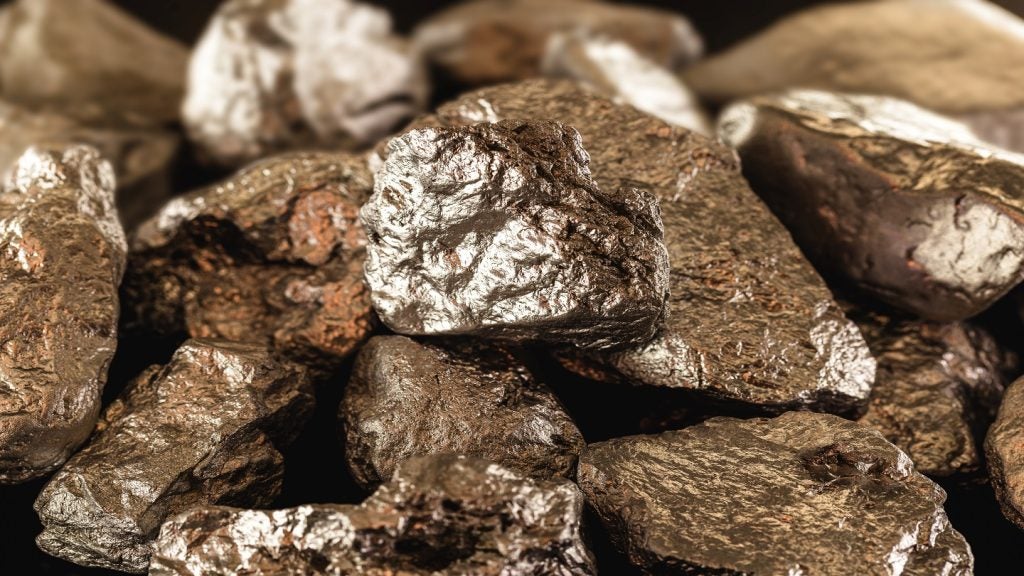
Powered by formidable demand from China and India, global economic anxieties and a whole raft of other factors, gold is right on track to hit the magical $1,000/oz. But while that sounds like great news for gold companies and investors, massive supply issues and spiralling costs for exploration and production suggest huge challenges ahead for the industry
Global gold production has been in steady decline since 2002. Production in 2007 was around 2,444t, down 1% on the previous year.
Analysts note that virtually all of the low-lying fruit has now been picked with respect to gold, meaning that companies will have to take on more challenging and more expensive projects to meet supply. The extent to which the current high price of gold can translate into profits remains to be seen.
As one of the world’s biggest gold producers, China remains a net importer of gold, while demand increases at an alarming rate in line with rapid industrialisation. Similarly, demand from India is also extremely high.
“Despite the rise in Chinese gold production, the country will remain a net importer of gold,” says Dr Sandra Close, director of Melbourne-based gold analysts Surbiton Associates. “China reported that demand for gold in 2007 reached 326t and it is expected to increase still further following the launch of gold trading on the Shanghai Futures Exchange in January.”
Exchange Traded Funds in the US and elsewhere have already placed strong upward pressure on gold’s price, which has increased 30% in the last six months alone. Earlier this month Goldcorp Mining President and CEO Kevin McArthur said that gold demand is so strong “we’re going to run out of gold”.
How well do you really know your competitors?
Access the most comprehensive Company Profiles on the market, powered by GlobalData. Save hours of research. Gain competitive edge.

Thank you!
Your download email will arrive shortly
Not ready to buy yet? Download a free sample
We are confident about the unique quality of our Company Profiles. However, we want you to make the most beneficial decision for your business, so we offer a free sample that you can download by submitting the below form
By GlobalDataChallenges facing the gold mining industry
In South Africa – traditionally the world’s biggest gold producer – electricity problems have seen several major producers flag significant production shortfalls.
Some have had to shut mines for almost a week due to concerns that they may have trouble bringing miners back up to the surface. According to some estimates, South African gold production may fall by 15–20% even if power levels can be maintained at 90% of the normal rate.
Mining operations all over the world have been hit by a raft of challenges, not least of which are spiralling production costs and chronic labour shortages.
“Virtually every cost associated with establishing and running a mine has risen significantly over the last few years. Mines require large amounts of coking coal and iron ore, both of which have gone up sharply along with basic energy costs. Then there’s the huge jump in labour costs stemming from the worsening skills shortages throughout the world. Additionally, in many countries, especially Australia, transport infrastructure is becoming harder and more expensive to access.
“There’s been a trend of underestimating the inflation of these new capital projects and a lot of companies, even the very big ones, have been way off,” says John Wilson, analyst and co-founder of Sydney-based firm Resource Capital Research. On the upside, mining technologies such as those used to peer ever deeper beneath ore bodies are improving.
The true value of gold: the unknown yellow brick road
The trouble with predicting what gold will do next lies in the fact that it is currently in unchartered territory. History tempts us to assume that a price correction of the likes seen in 2006 can’t be far away. On the other hand, the long-term outlooks for the booming economies of major consumers China and India raise the question of whether gold and other commodities markets, may be undergoing a radical and permanent realignment.
Also changing are perceptions of gold’s value as a safe haven or alternative currency. A few years ago much of this discussion centred on the fact that gold did not behave as many had expected when conflict escalated in the Middle East.
However it would seem that the threat of recession in the US is doing something to reinstate gold’s traditional role. And regardless of whether investors simply move into gold because of the recession fears or the sub-prime mortgage crisis, the downward trend of the US dollar will likely encourage many countries to slim down their reserves of the currency in favour of gold, pushing the price even higher.
One school of thought with regard to commodities now is that the so-called supercycle of prices may be a thing of the past, making way for a total paradigm shift in which prices may never fully come back down to earth.
While many are sceptical, analysts note, for instance, that income levels in China are yet to approach levels whereby demand for gold could truly go exponential. “China is getting to some of those income levels,” says RCR’s Wilson.
Some analysts warn, however, on the risk that without any follow-on physical demand for gold, particularly out of India, the Far East and the Middle East (which together buy about 70% of annual physical demand for gold), significant physical selling could occur. This was observed in the spring of 2006, when the gold price spiked to $735/oz and then sold-off to $550/oz.
If prices remain high or rise even further, then the costs of major mining projects are far easier to justify. If they fall back down, as is always a possibility, then many companies could find themselves in dire straits. But even without a price correction, Wilson warns that many assumptions have been made about potential high profits for gold companies which may never materialise.
Also making gold investors nervous at the moment is the possibility that the IMF (International Monetary Fund) will soon undertake a major divestment of its gold reserves.
The IMF has 3,200t of gold bullion, the world’s third largest reserve behind Germany and the US.
However, analysts expect that strong institutional and retail investment demand for gold will likely absorb the effects.
“In some cases [profitability] hasn’t actually improved; capital costs have risen and operating costs have risen,” Wilson says.
According to Bhavesh Morar, national leader of the mining, energy and infrastructure group with Deloitte Australia, frenzied exploration activity over the last few years has seen virtually all of the easy harvest been picked with respect to gold.
“With continuing high gold prices, the cut-off grade at which mining companies will commence mining an ore body has decreased,” Morar says.
A hungrier dig: encouraging more gold exploration projects
The high price of gold is however encouraging more adventurous projects, be they more challenging financially, geologically, geopolitically or all three. New projects for gold and other resources are mushrooming throughout Africa, China, the Middle East and the former Soviet Union; all areas where sovereign risk is potentially very high.
Australian Stock Exchange (ASX) and HK-listed Sino Gold has achieved success in China, which is helping to allay sovereign risk fears amongst other foreign miners looking at opportunities in the country. The company recently upgraded its ore estimate at the White Mountain Mine in North Eastern China by 81% to 6.5 million tonnes at 3.8g/t gold, containing 0.8 million ounces. Sino Gold also announced that its Jinfeng mine had returned to full production after power problems stemming from China’s recent severe winter weather.
Driven by its own supply problems, China is now courting Zimbabwe for investment and exploration opportunities in the gold and platinum mining sectors following a visit there by the Chinese deputy minister of Commerce and a 22-member delegation comprising experts in the mining, exploration and trade sectors in February of this year.
RCR’s Wilson says a notable trend currently in the gold market, particularly in Western Australia, is for gold miners to dust off the deeds for previously abandoned mills now that the business cases seem more positive. In many cases the original licensing agreements, be they with governments or traditional land owners, are still in effect.
Although “the quality of remnant resources is often lower quality than was supposed at the time of due diligence”, Wilson notes that the gold price is emboldening junior miners. Deloitte’s Morar agrees.
“The rush is on – with a boom like this you produce as much as you can,” says Morar. Large numbers of juniors have entered the fray in the last few years and there are now more than 2,000 mining companies throughout the world with some degree of exposure to gold.
In Australia, a number of troubled projects look set to gain traction, while BHP Billiton reported recently that it had confirmed significant new gold reserves in its Olympic Dam Mine in South Australia.
Investor sentiment towards high profile Australian gold producers Newcrest and Lihir may be lifting as the two companies iron out their respective problems. Both companies had announced production shortfalls and were each suffering from earlier hedging positions taken to finance ambitious investments.
Production at Lihir’s Papua New Guinea mine fell well shy of the projected amount of 800,000–830,000oz. Last year’s friendly takeover of Ballarat Goldfields, however, was greeted warmly by investors and is expected to yield around 200,000oz a year for 20 years.
Newcrest also reported production shortfalls at its troubled Telfer operations in West Australia. These were partly offset by better-than-expected results from its Cadia Valley operations in NSW. Newcrest’s share price has gone from $22 to over $34 in just 12 months. Lihir’s shares rose also, although far less impressively, from $3.36 to $3.57. Still, Citigroup‘s recommendation for Newcrest and Lihir is merely ‘hold’, while it has a ‘strong buy’ recommendation for Barrick Gold.
Canada’s Kinross Gold has one of the more bullish outlooks for this year, following on from a solid performance in 2007. Chairman and CEO Tye Burt said last month that the company was targeting increased investment in gold exploration across the board including of green-fields sites. The company is negotiating with Barrick Gold the terms of a joint venture arrangement to develop the Cerro Casale copper and gold deposit in Chile. Kinross expects to produce 1.9 million to two million gold-equivalent ounces this year, increasing to between 2.5 million to 2.6 million gold-equivalent ounces in 2009.
Also very bullish, gold giant AngloGold Ashanti last year announced plans for three new mines within existing infrastructure in South Africa and Ghana. But despite all the excitement and speculation about how much higher gold could possibly go, Deloitte’s Morar feels that some sort of correction is most certainly in the offing.
“With gold, the key drivers are consumption in India and China and global instability,” he says.
“If the global economy comes back to normal growth rates and financial instability resolves itself, I think the gold price will probably come down a little bit.”







